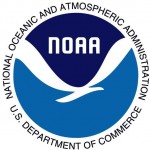National Weather Service Cooperative Observer Program
The Cooperative Observer Program (Coop) was initiated by an act of Congress in 1890 with two goals: First, to provide daily meteorological observations of minimum and maximum precipitation, snowfall and temperature; second, Coop was to play a supportive role for weather forecasting, warning and public service purposes. Today the program has nearly 10,000 volunteers that contribute to daily measurements in a variety of locales, from urban to rural and ocean-to-ocean across the nation. The NWS supports Coop through the selection of observation locations, the recruitment and training of observers, the installation of equipment, as well as maintenance, collection and disbursement of data with the help of the National Climate Data Center. Funding for Coop began after the establishment of the Weather Bureau by Congress in 1890, therefore establishing the first network of cooperative weather stations. Since then, volunteer weather observation has been the backbone of the United States climate data, crediting the Cooperative Network for establishing the most definitive source of weather data for the United States.
Geographic Scope: National
Project Status: Active
Participation Tasks:
Start Date: 1890
Project Contact: nws.coopobserver@noaa.gov
Federal Government Sponsor:

Other Federal Government Sponsor:
Fields of Science: Climate and weather
Intended Outcomes: Programmatic, Research development, Conservation,

